NLP in SEO is a game-changer that helps in boosting the topical relevance score of your webpage for your target keywords. Google is a semantic search engine that uses several machine learning algorithms to analyze large volumes of text in search queries and web pages.
NLP helps Google analyze and extract information and also establish a relationship between words to understand the context of user search queries.
In short, NLP teaches Google how to understand human language.
When you reverse engineer the NLP algorithm to create content and pages focused on the context of a user’s search queries, you can improve your SEO.
What is NLP for SEO?

Integrating Natural Language Processing (NLP) into your SEO strategy can revolutionize your approach by elevating the topical relevance of your webpage for your desired keywords. Google, as a semantic search engine, leverages a myriad of machine learning algorithms to sift through vast amounts of text within search queries and web pages.
NLP plays a pivotal role in Google’s ability to analyze and extract information, while also discerning the relationships between words to grasp the nuanced context of user search queries. Essentially, NLP equips Google with the capability to comprehend human language.
By reverse engineering the NLP algorithm and crafting content and pages tailored to the context of user search queries, you can enhance your SEO efforts significantly. This strategic alignment ensures that your content resonates more effectively with search intent, ultimately driving improved visibility and engagement on your website.
Natural Language Processing (NLP) in SEO represents a groundbreaking advancement in search engine technology, empowering Google and other search engines to comprehend and interpret human language with remarkable precision. At the heart of this innovation lies BERT (Bidirectional Encoder Representations from Transformers), a sophisticated language model employed by Google to unravel the complexities of ambiguous language within text.
Unlike conventional language models, BERT operates by considering the entirety of a sentence’s context rather than analyzing individual words in isolation. This holistic approach enables Google to glean deeper insights into the nuances of human communication, facilitating a nuanced understanding of user intent and query context.
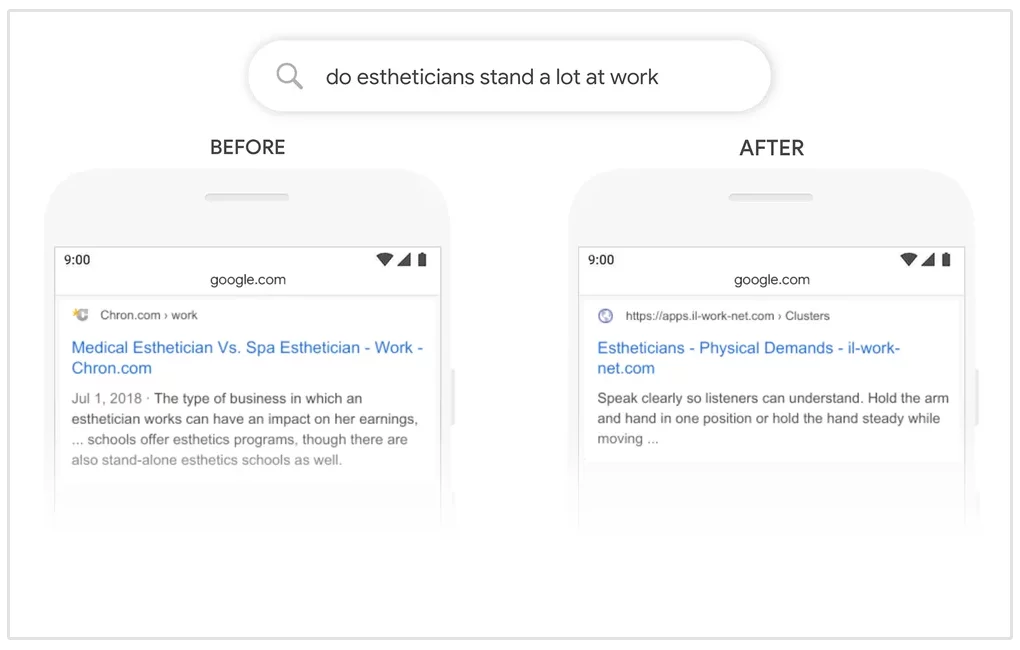
NLP, as a discipline, harnesses the power of artificial intelligence (AI) to deconstruct and analyze human language, deciphering the underlying meaning embedded within a body of text. When applied to SEO, NLP serves as a pivotal tool for discerning the intent behind user queries and crafting content that resonates authentically with the searcher’s needs and expectations.
But how does NLP actually work?
At its core, NLP functions as the cognitive engine for computers, enabling them to comprehend and process human language in a manner akin to human cognition. This technology equips Google with the capability to decipher the syntax, semantics, entities, sentiment, and discourse embedded within search queries and website content.
When the user initiates a search query on Google, the NLP algorithms spring into action, meticulously dissecting the query to extract its constituent components, discern the overarching context, and identify the user’s underlying intent. BERT, as the cornerstone of Google’s NLP capabilities, revolutionizes this process by facilitating a more nuanced analysis of words in relation to one another, both preceding and succeeding a given sentence.

By comprehensively analyzing the user query, Google’s NLP algorithms perform a myriad of tasks, including:
- Identifying entities referenced within the query, such as individuals, places, objects, or concepts, to better understand the user’s search intent.
- Conducting sentiment analysis to gauge the emotional tone conveyed within the text, whether it be positive, negative, or neutral.
- Categorizing the query into specific topics or themes, aiding Google in organizing search results and delivering more relevant and organized responses.
Armed with these insights, Google leverages NLP methods to retrieve and rank pertinent website pages from its vast repository of indexed content. The culmination of this process is reflected in the search engine results page (SERP), where users are presented with a curated selection of search results tailored to their specific queries.
Strategies to Use NLP in SEO:
1. Understand User Intent
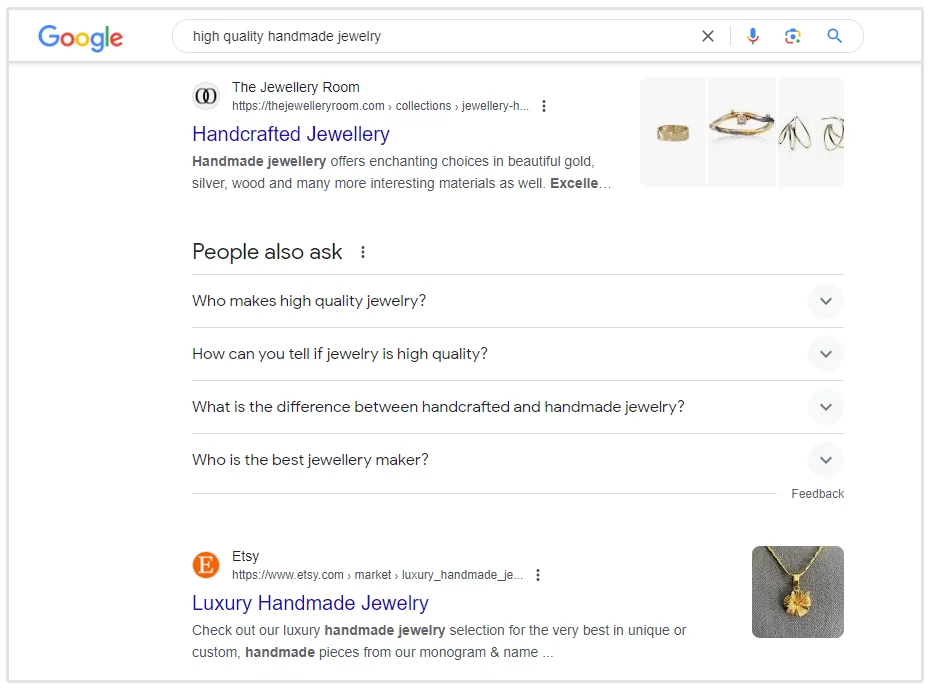
Understanding user intent is a pivotal aspect of modern SEO, as it enables website owners to create content that resonates with the needs and expectations of their target audience. One of the key advancements in achieving this understanding is through the application of Natural Language Processing (NLP), which empowers search engines to decipher the nuanced context and underlying intent behind user queries.
Consider the scenario where a website owner aims to rank their site for the primary keyword ‘handmade jewelry.’ While this keyword provides a broad indication of user interest, it does not fully capture the specific intent behind the search. However, with the integration of NLP into search engine algorithms, such as Google’s BERT model, search engines are equipped to unravel the intricacies of user intent with greater accuracy.
For instance, let’s examine a user query containing the phrase ‘high quality handmade jewelry.’ While the primary keyword remains ‘handmade jewelry,’ the additional modifier ‘high quality’ provides crucial context about the user’s intent. Through NLP, search engines can discern that the user is not merely seeking information about handmade jewelry but is specifically interested in high-quality craftsmanship.
This understanding enables search engines to infer that the user is likely in the market to purchase handmade jewelry of superior quality, as opposed to mass-produced alternatives. Consequently, search engine algorithms can prioritize and serve up search results that align more closely with the user’s intent, delivering a more relevant and satisfying search experience.
By leveraging NLP to decipher user intent, website owners can tailor their SEO strategies to address the specific needs and preferences of their target audience. This may involve optimizing content to align with key modifiers and qualifiers commonly used by users to express their intent, such as ‘high quality,’ ‘affordable,’ ‘custom-made,’ or ‘local.’
Additionally, understanding user intent enables website owners to create content that not only ranks well in search results but also resonates with users on a deeper level. By crafting content that addresses the specific questions, concerns, and desires of their audience, website owners can foster greater engagement, trust, and ultimately, conversion.
Learn about machine learning here.
2. Keyword Analysis
Keyword analysis is a critical component of SEO strategy, enabling website owners to identify and target the most relevant and valuable keywords for their content. With the advent of NLP, this process has become more sophisticated, allowing for deeper insights into user intent and search behavior.
For example, consider a scenario where a website aims to rank for the keyword phrase ‘high quality handmade jewelry.’ Through NLP calculations, search engines can dissect this query and recognize important keywords such as ‘handcrafted necklaces’ or ‘artisan bracelets.’ These keywords provide valuable context about the user’s specific preferences and interests, allowing website owners to tailor their content accordingly.
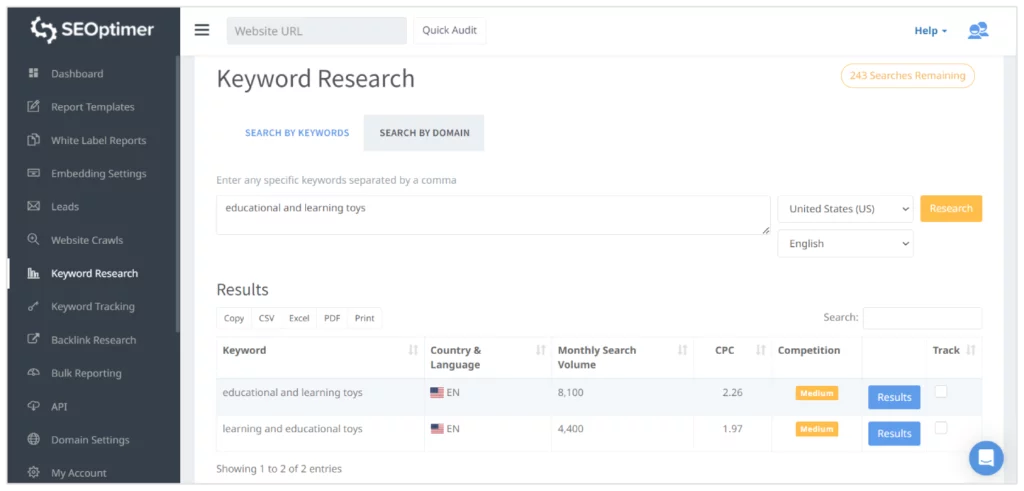
In the keyword analysis process, both Latent Semantic Indexing (LSI) and NLP analysis play crucial roles. LSI helps identify related keywords and concepts that are semantically similar to the primary keyword, providing a broader scope of relevant terms to target. Meanwhile, NLP analysis delves deeper into the nuances of user language and intent, uncovering specific modifiers and qualifiers that users incorporate into their search queries.
To compile a comprehensive list of keywords that align with the primary search intent, website owners can leverage various tools and techniques. This may involve brainstorming relevant terms related to the primary keyword, as well as conducting thorough keyword research using specialized tools.
For example, website owners can explore keywords related to craftsmanship and quality, such as ‘textures,’ ‘patterns,’ ‘artistry,’ ‘craftsmanship,’ ‘hand-embossed,’ ‘hand-painted,’ and ‘hand-sculpted.’ These terms not only reflect the user’s interest in high-quality handmade jewelry but also highlight specific attributes and characteristics that resonate with their preferences.
Tools like SEOptimer offer valuable assistance in this regard, providing robust keyword research capabilities to uncover valuable insights. By utilizing SEOptimer’s keyword research tool, website owners can identify high-performing keywords for their organic search marketing campaigns. This tool offers insights into various metrics, including search volume, competition, SERP results, estimated traffic volume, and estimated CPC (Cost Per Click), enabling website owners to make informed decisions about their keyword strategy.
3. Optimize the content
Content optimization is a vital aspect of SEO which involves strategically integrating relevant keywords and semantic elements into website content to enhance its visibility and relevance in search engine results. By leveraging in-depth keyword research and understanding the principles of Natural Language Processing (NLP), website owners can optimize their content effectively to cater to user intent and preferences.
Once you have conducted thorough keyword research, you possess a valuable set of keywords that can be strategically incorporated into your content to boost its NLP analysis score. This involves identifying relevant keywords that align with the theme and purpose of your content, thereby signaling to search engines the relevance and topicality of your content.
For example, if you are optimizing product descriptions for handmade jewelry, it’s essential to include relevant keywords that highlight the craftsmanship, uniqueness, and quality of your products. These keywords should encompass various elements related to jewelry making, such as materials, techniques, tools, workshops, customization options, inspiration sources, quality control measures, pricing, and valuation.
Some key elements to consider for content optimization include:
- Craftsmanship: Highlight the intricate craftsmanship and attention to detail that sets your jewelry apart. Incorporate keywords related to materials (e.g., metals, gemstones, beads, leather), techniques (e.g., soldering, wire wrapping, beading), and tools (e.g., pliers, hammers, torches) used in the creation process.
- Unique Selling Points: Showcase the unique aspects of your products, such as customization options, artisan fairs or markets where they are showcased, and the inspiration behind their design (e.g., nature, culture, art).
- Quality Control: Emphasize your commitment to quality by including keywords related to quality control measures, such as thorough inspections and testing procedures to ensure the highest standards of craftsmanship.
- Pricing and Valuation: Provide transparent information about pricing and valuation, including keywords related to pricing tiers, value propositions, and any special offers or discounts available.
By strategically incorporating these semantic elements and keywords into your content, you not only enhance its relevance and visibility in search results but even provide valuable information that resonates with your target audience. This proactive approach to content optimization ensures that your website effectively communicates its unique value proposition and engages users in a meaningful way.
4. Semantic comprehension
Semantic comprehension is a crucial concept in SEO that refers to the ability of search engines to understand the context behind words and phrases within content. Natural Language Processing (NLP) plays a vital role in enhancing semantic comprehension, as it enables search engines to analyze and interpret human language in a manner akin to human cognition.
At its core, semantic comprehension allows search engines to go beyond the interpretation of keywords and phrases and grasp the underlying intent and context of user queries. This capability is essential for delivering relevant and accurate search results that align with the user’s search intent.
For example, consider a user query for “custom-designed jewelry.” While the keywords themselves may not explicitly mention handmade jewelry, search engines with advanced semantic comprehension abilities can recognize the implicit connection between custom-designed and handcrafted jewelry. As a result, the search engine can retrieve and display relevant results for handmade jewelry, even if the specific keyword is not present in the query.
Semantic comprehension is particularly important in improving the user experience and relevance of search results. By understanding the broader context and intent behind user queries, search engines can deliver more accurate and useful results that better meet the user’s needs.
5. Featured snippets
Featured snippets are a prominent example of how semantic comprehension influences search engine results. Featured snippets are concise summaries of content that appear at the top of search result, providing users with quick answers to their queries. These snippets are often extracted from content that comprehensively addresses the user’s query in a clear and concise manner.
To optimize featured snippets, website owners should ensure that their content provides valuable and informative insights into relevant topics, such as handcrafted jewelry. By creating comprehensive and authoritative content that addresses common questions and concerns within their niche, website owners increase the likelihood of their content being featured as a snippet in search results.

For instance, a blog post titled “How to Tell the Difference Between Handmade and Mass-Produced Jewelry” could potentially appear as a featured snippet in search results. By addressing a specific user query and providing detailed information on the topic, this content has the potential to attract additional clicks and drive traffic to the website.
HOW TO USE NLP IN SEO:
A. Keep Search Intent at the Forefront:
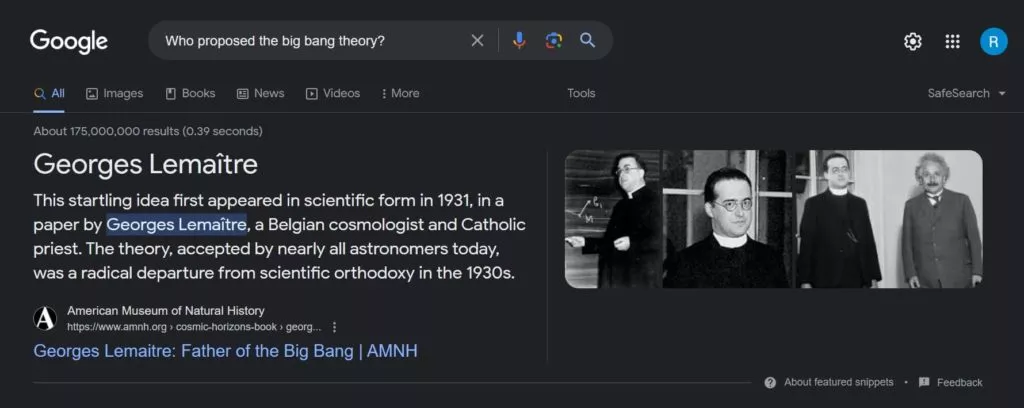
Incorporating NLP into your SEO approach involves consistently producing content with user search intent in mind. This entails understanding what users are seeking and creating content that directly addresses their inquiries and requirements.
By aligning your content with the search intent, you can enhance visibility, relevance, and ultimately drive more traffic to your site.
Leverage NLP Algorithms: Utilize NLP algorithms to gain insights into the underlying intent behind user queries. Categorize queries into informational, transactional, navigational, or commercial investigation intents, and tailor your content accordingly.
- Informational Intent: Users seek information or answers to questions, such as “Who proposed the big bang theory?”, “What is the capital of England?”, or “Which are the best AI tools?”
- Navigational Intent: Users are seeking a specific website or webpage, such as “Facebook login” or “YouTube homepage.”
- Commercial Investigation Intent: Users research products or services before making a purchase, like “best laptops under $1000” or “travel insurance plan comparison.”
- Transactional Intent: Users intend to complete a specific action, such as “buy running shoes online” or “book a roundtrip to Dubai.”

B. Align Content with Search Intent:
Ensure that your content matches the searcher’s intent to enhance its ranking in organic searches. Tailor your content to provide relevant information, address user queries, and fulfill their needs based on the identified search intent.
Using Natural Language Processing (NLP) in your SEO strategy involves writing in a clear and straightforward manner to enhance your website’s visibility in search results. By employing natural language and addressing user needs directly, you can effectively communicate with your audience and enhance your chances of ranking higher in the search engine results pages (SERPs).
Here are some actionable tips to help you write in a simple and clear way for better SEO results:
- Use Active Voice: Opt for an active voice in your writing to make your sentences clearer and more engaging. Active voice sentences are more direct and easier to understand than passive voice constructions. For instance, saying “The cat chased the mouse” is more straightforward than “The mouse was chased by the cat.”
- Avoid Redundancy: Remove unnecessary words or phrases that do not add value to your message. Keep your writing concise and to the point. Eliminating redundancy helps maintain reader interest and ensures that your content remains focused and impactful. Additionally, create content that aligns with user intent and seamlessly integrates target keywords into the text.
- Provide Examples: Focus on addressing common inquiries, providing relevant information, and offering solutions to users’ concerns. Incorporate examples or analogies to clarify complex concepts and make them more relatable to your audience. Examples can help illustrate your points effectively and enhance understanding.
- Craft Meta Descriptions: Craft concise and relevant meta descriptions that summarize the content of your pages. Meta-descriptions appear in search results and help users determine the relevance of your content to their query. Write compelling descriptions that entice users to click through to your website.
- Use Visuals: Incorporate visuals such as images, charts, or diagrams to complement your text and reinforce key points. Visuals can enhance the overall message of your content and make it more engaging for users. Choose high-quality illustrations that effectively convey information and enhance the user experience.
C. Improve content visibility
Improving the visibility of your content in the search snippets is a primary goal of Natural Language Processing (NLP). NLP achieves this by dissecting user inquiries and identifying the most relevant content to showcase.
By enhancing your content with natural language and addressing common user queries, you enhance the likelihood of Google selecting your content for Featured Snippets. Content that directly addresses specific questions, provides step-by-step instructions, or offers concise explanations is well-suited for appearing in snippets with NLP.
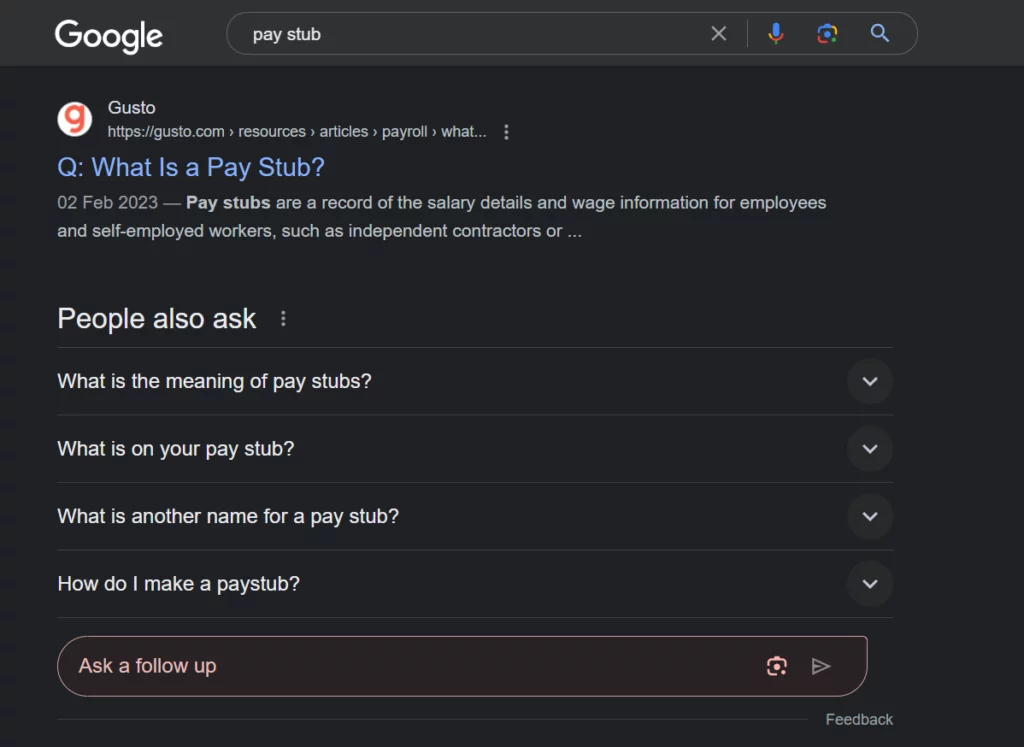
Organizing your content in a logical and succinct manner further increases its chances of being chosen for featured snippets. For instance, if you’re promoting HR management software, you can leverage NLP by examining the “People Also Ask” question box for commonly asked questions related to your primary keyword, such as “pay stub questions”. This enables you to compile a list of question-based keywords that can be incorporated into your main content piece as Frequently Asked Questions (FAQs). By proactively addressing common user queries through NLP-driven content optimization, you enhance the visibility and relevance of your content in search results.
D. Create content in a structured and logical manner
Creating content in a logical and structured manner is vital for effectively communicating with your target audience and achieving your goals, whether it’s building brand awareness or driving conversions. Here’s a detailed guide on how to create content that is user-friendly and search engine optimized:
- Understand Your Audience and Objectives: Before diving into content creation, take the time to understand the target audience (buyer persona) and your goals (branding or conversions). This understanding will shape the content strategy and ensure that your content resonates with your audience while aligning with your business objectives.
- Structure Your Content: Organize the content in a way that is easy to read and navigate for both users and search engine crawlers. Use headings, subheadings, bullet points, and clear design elements to enhance readability and make it easier for readers to consume your content. A well-structured layout also improves the user experience and encourages engagement with your content.
- Use Transitional Words: Incorporate transitional words and phrases to guide readers smoothly from one point to the next within your content. This helps maintain the flow of your writing and keeps readers engaged as they progress through your piece. Transitional words act as signposts, signaling shifts in ideas or topics and helping readers follow your train of thought.
- Create Clear Headings and Subheadings: Every section of your content should have a clear and descriptive heading, separating the text into easily digestible subsections. Headings and subheadings not only improve readability but also make it easier for users to scan your content and find the information they’re looking for.
- Use Natural Language: Write in a conversational tone using NL throughout your content. Avoid jargon and technical terms that could confuse or alienate your audience. Rather, focus on providing valuable information that addresses the user’s questions and concerns in a clear and accessible way. This approach also aligns with how people search for information online, improving the chances of your content being discovered.
- Avoid Keyword Stuffing: While it’s essential to include relevant keywords in your content for SEO purposes, avoid keyword stuffing at all costs. Focus on incorporating keywords naturally and seamlessly into your content, ensuring that they enhance rather than detract from the readability and user experience.
- Back Up Your Points: Support your arguments and claims with evidence, examples, statistics, or anecdotes to add credibility and depth to your content. Citing reputable sources adds authority to your content and builds trust with your audience. Be sure to include proper citations if you’re referencing external information to maintain transparency and integrity.
E. Create topic clusters
To begin, it’s essential to understand what a content silo is and how it functions within your overall content strategy. Firstly, identify the core concepts and subtopics that you wish to address. These form the foundation of your content silo structure.
Next, create comprehensive and detailed pieces of content, often referred to as pillar content, for each core concept. These pillar pieces serve as the main hub or cornerstone for their respective topics, covering them broadly and providing a solid foundation for further exploration.

Once you have established your pillar content, it’s time to break down each core concept into more specific subtopics or aspects. These subtopics should be closely related to the main theme but offer a narrower focus, allowing for more detailed exploration.
Finally, develop additional content pieces, known as cluster content, that delve deeper into each subtopic. These could take the form of blog posts, articles, case studies, tutorials, or other formats that provide valuable insights and information. By creating a network of inter-linked content pieces within each silo, you can effectively demonstrate your expertise in the given subject area and improve your website’s overall visibility and authority.
F. Create structured data
Structured data is integral to the Semantic Web, a framework that organizes information in a manner conducive to machine comprehension and interoperability.
Adhering to semantic standards like RDF (Resource Description Framework) and OWL (Web Ontology Language), structured data facilitates advanced Natural Language Processing (NLP) applications capable of reasoning and deriving meaning from data.
Structured data aids in identifying entities mentioned within text, including individuals, organizations, locations, dates, and beyond.
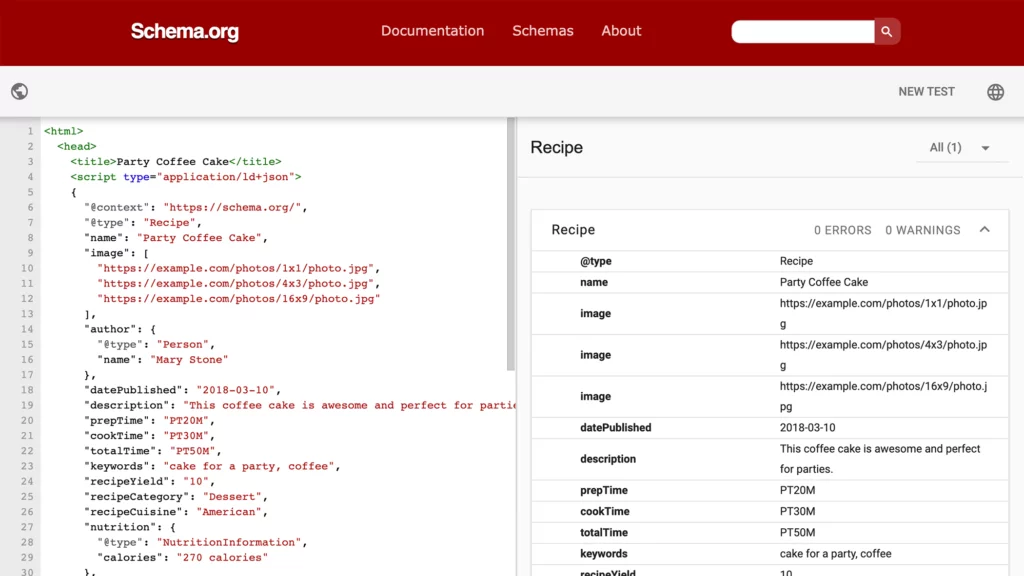
By applying structured data markup to tag these entities, NLP systems can effectively discern relationships between various entities and extract valuable insights from the text.
Schema markup, a form of structured data, empowers websites to furnish search engines with additional context regarding their content. This encompasses diverse information such as contact details, pricing, customer reviews, service offerings, and more, thereby enriching search results and augmenting the user experience.
G. Use voice search
Optimizing for voice search is important in the realm of SEO as voice-activated assistants like Siri, Alexa, and Google Assistant become more prevalent in our daily lives.
To improve visibility in voice search results, it’s crucial to implement strategies tailored to the unique characteristics of voice search queries. Here’s a detailed guide on how to optimize for voice search:
- Understand Voice Search: Voice search queries tend to be more conversational and longer than traditional text-based queries. Users often pose questions or make requests in a natural, spoken language format. Understanding this shift in user behavior is essential for crafting content that aligns with voice search patterns.
- Incorporate Long-Tail Keywords: Long-tail keywords, which are longer and more specific phrases, are particularly important for voice search optimization. Users are more likely to use complete sentences or detailed queries when using voice search, so incorporating these phrases into your content can improve your chances of appearing in relevant voice search results.
- Adopt Conversational Language: Voice search queries are conversational in nature, so it’s essential to adopt a conversational tone in your content. Write in a way that mimics natural speech patterns and addresses common questions or concerns your audience may have. This helps your content resonate with voice search users and increases the likelihood of your website being surfaced as a relevant result.
- Provide Concise Answers: Voice search users typically seek quick, concise answers to their queries. Structure your content to provide clear and direct answers to the common questions, and optimize the content for featured snippets, which are often used as responses to voice search queries.
- Optimize Local SEO: Many voice searches are local in nature, with users seeking information about nearby businesses, services, or attractions. Ensure that your business’s online presence is optimized for local SEO by claiming and thus, optimizing your Google My Business listing, including relevant location-based keywords in your content, and encouraging customer reviews and ratings.
- Use Structured Data Markup: Implement structured data markup, such as schema.org markup, to provide search engines with additional context about your content. This helps search engines understand the purpose and context of your content, making it more likely to be surfaced in voice search results.
- Monitor Performance and Iterate: Regularly monitor your website’s performance in voice search results and analyze user interactions to identify areas for improvement. Continuously iterate and refine your voice search optimization strategies based on insights gathered from data and user feedback.
Conclusion:
Understanding NLP SEO is imperative for website owners. Through natural language processing techniques, websites can optimize their content, enhance user experience, and augment their visibility in search engine results pages. With the proliferation of voice search and the evolution of search engine algorithms, integrating NLP into your SEO strategy is paramount for maintaining competitiveness in the contemporary digital landscape.
FAQs on NLP and SEO:
What tools are available for NLP SEO?
You can utilize tools like SEOptimer for conducting keyword research and the Hemingway App for enhancing readability.
Why is NLP SEO important for my website?
In light of the increasing prevalence of voice search devices and virtual assistants, optimizing your content for natural language queries has become crucial. NLP enables you to grasp conversational language patterns, empowering you to tailor your content to match how people verbally articulate their queries and concerns.
How does NLP SEO differ from traditional SEO?
NLP SEO diverges from traditional SEO by its methodology in comprehending and optimizing content for search engines. While traditional SEO primarily concentrates on keywords and technical elements such as meta tags and backlinks, NLP SEO places emphasis on deciphering the semantic meaning of words and phrases, user intent, and natural language patterns. By leveraging NLP techniques like semantic analysis, entity recognition, and sentiment analysis, NLP SEO aims to create content that not only aligns with specific search queries but also corresponds with the context and intent behind those queries, thereby delivering a more pertinent and satisfactory search experience for users.



